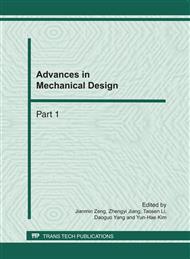p.831
p.835
p.839
p.845
p.850
p.858
p.865
p.870
p.874
Identification of Excitation Source Number Using Principal Component Analysis
Abstract:
Principal component analysis (PCA), serving as one of the basic blind signal processing techniques, is extensively employed in all forms of analysis for extracting relevant information from confusing data sets. The principle of PCA is explained in this paper firstly, then the simulation and experiment are carried out to a simply supported beam rig, and PCA is used in frequency domain to identify sources number of several cases. Meanwhile principal components (PCs) contribution coefficient and signal to noise ratio between neighboring PCs (neighboring SNR) are introduced to cutoff minor components quantificationally. The results show that when observation number is equal to or larger than source number and additive noise is feebleness, accurate prediction of the number of uncorrelated excitation sources in a multiple input multiple output system could be obtained by principal component analysis.
Info:
Periodical:
Pages:
850-857
Citation:
Online since:
February 2011
Authors:
Price:
Сopyright:
© 2011 Trans Tech Publications Ltd. All Rights Reserved
Share:
Citation:


